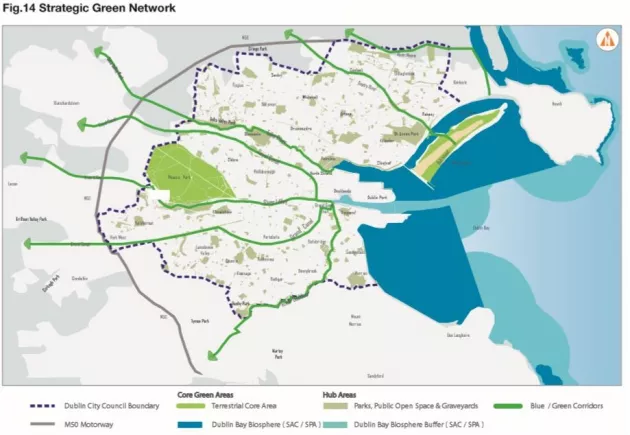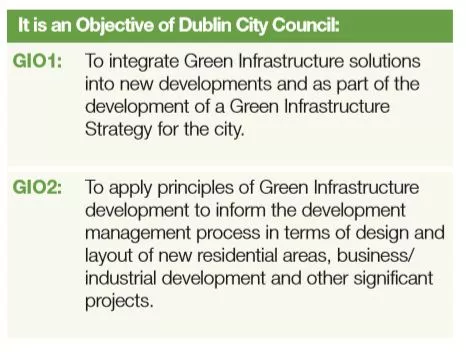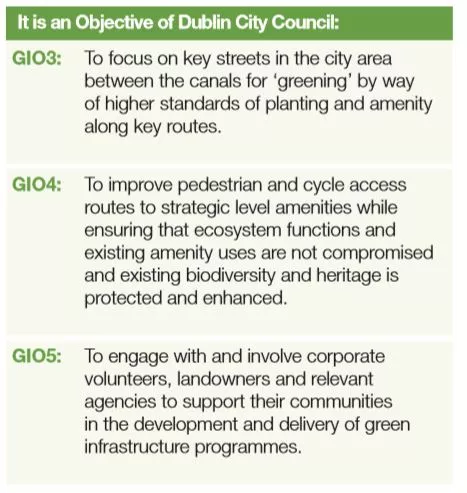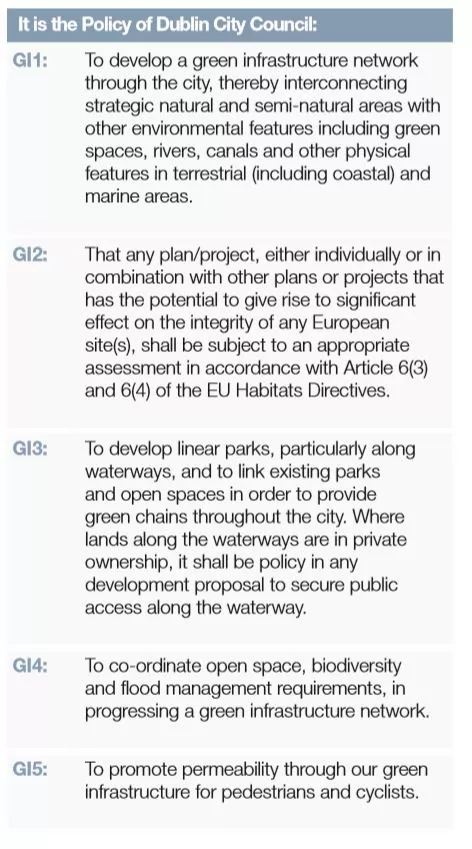10.5.1 Green Infrastructure
10.5.1 Green Infrastructure
Green infrastructure is an interconnected network of green space that conserves natural ecosystem values and functions that also provides associated benefits to the human population. It is a strategically planned network of natural and semi-natural areas with other environmental features designed and managed to deliver a wide range of ecosystem services. It incorporates green spaces (or blue if aquatic ecosystems are concerned) and other physical features in terrestrial (including coastal) and marine areas.
Dublin City Council will actively promote a green infrastructure strategy which draws on the Council’s sustainability principles (see Appendix 23 on Green Infrastructure Guiding Principles). The strategy comprises a spatial strategic network to be delivered through local area plans and through the development management process.
Green infrastructure systems are spatially made of three different parts:
a) Core Areas which are the nuclei of the network and provide essential habitat for sensitive species
b) Hubs which are places buffering the core areas, and are made of the largest, least fragmented continuous areas of forest, wetlands, stream systems, or other native landscape types
c) Corridors are vital to maintain connectivity in the landscape and provide for animal movement, seed and pollen dispersal, and plant migration.
The Council recognises the benefits to the sustainability of the city and in terms of clean air and better water quality. Implementing green infrastructure features in urban areas creates a greater sense of community, strengthens the link with voluntary actions undertaken by civil society, and helps combat social exclusion and isolation. They benefit the individual and the community physically, psychologically, emotionally and socio-economically.
Green infrastructure creates opportunities to connect urban areas and provides appealing places in which to live and work. Through urban food production and community gardens, which are efficient tools to educate schoolchildren and engage the interest of young people in particular, it addresses the disconnect between the production and consumption of food and helps increase its perceived value.
Investments in green infrastructure have significant potential to strengthen regional and urban development, including the creation of jobs.



